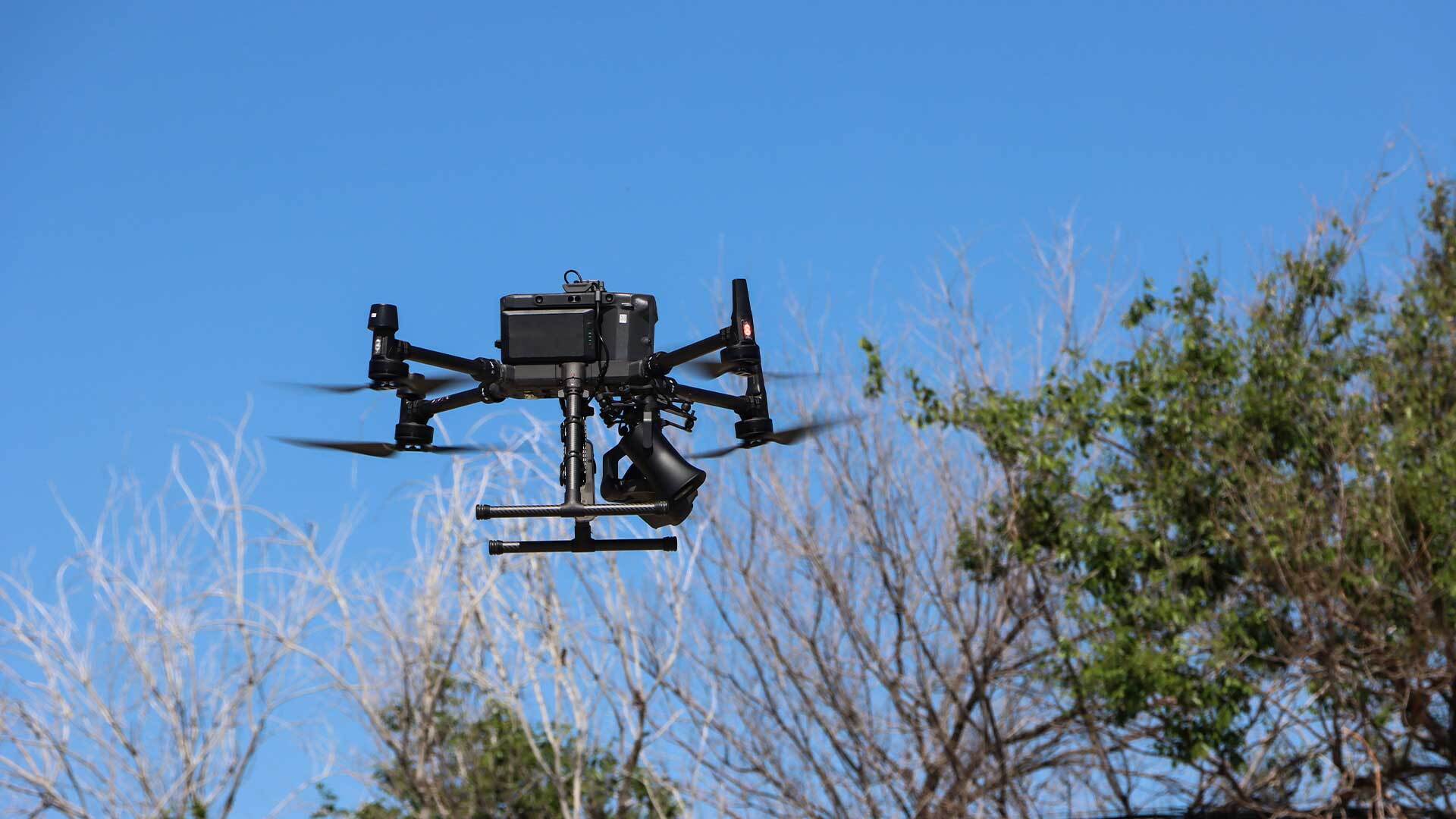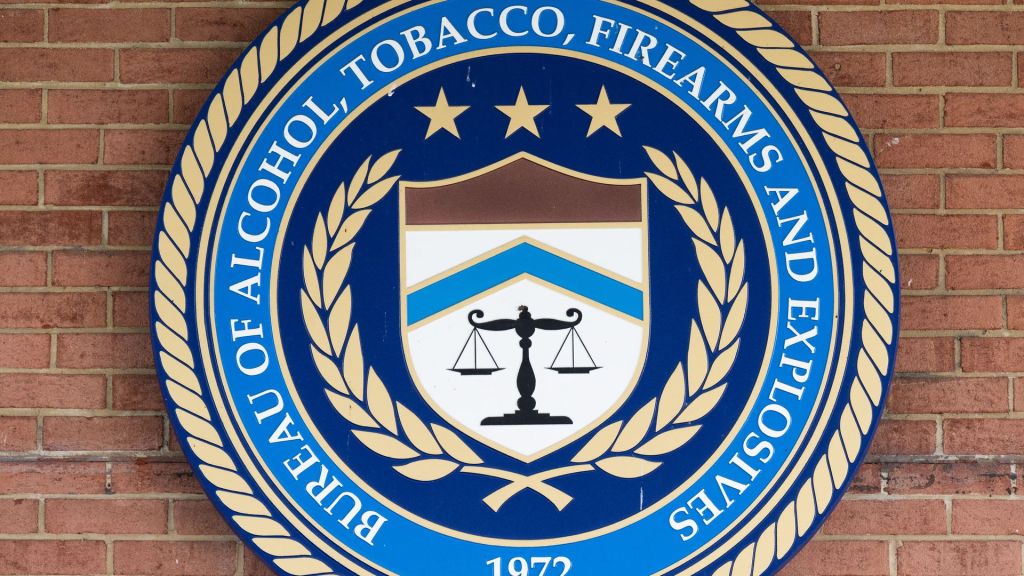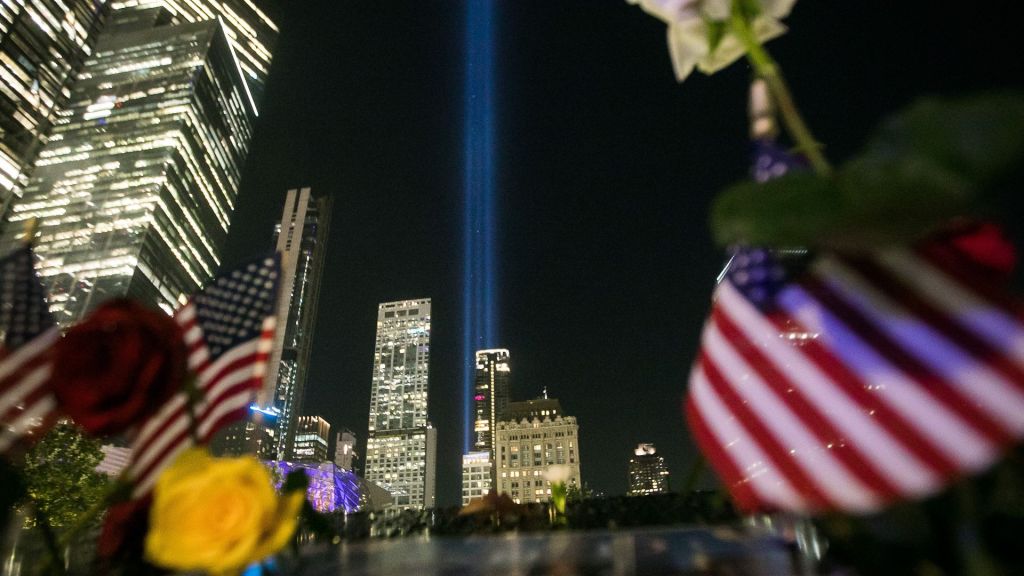
[LAUREN TAYLOR]
THIS SCENE FROM THE 2020 OSCAR-NOMINATED SCI-FI SHORT FILM “PLEASE HOLD” MIGHT SOON BECOME A REALITY.
WHEN YOU DIAL 911 — MORE AND MORE — POLICE DEPARTMENTS ARE TURNING TO DRONES AS THEIR FIRST LINE OF RESPONSE. OVER 15-HUNDRED DEPARTMENTS ACROSS THE STATES ARE EQUIPPED WITH UNMANNED AERIAL VEHICLES CAPABLE OF FUNCTIONING IN REAL-TIME WITH 911 OPERATORS AND POLICE UNITS ON THE GROUND.
IN 2018 CHULA VISTA, CALIFORNIA BECAME THE FIRST CITY TO USE DRONES AS A FIRST RESPONDER. CHULA VISTA POLICE LAUNCHED THEIR FIRST RESPONDER DRONES TO NEARLY 9-THOUSAND 9-1-1 CALLS SINCE 2022. THE FLIGHTS RESULTED IN 11 CITATIONS AND 10 ARRESTS.
THIS TREND IS EXTENDING BEYOND CALIFORNIA. POLICE DEPARTMENTS IN NEW YORK AND DENVER NOW PLAN TO DEPLOY THEM AS FIRST RESPONDERS FOR DAY-TO-DAY CALLS TO ALLOW OFFICERS TO PRIORITIZE MORE URGENT MATTERS.
DRONES CAN SURVEY AREAS AND STREAM LIVE VIDEO BACK TO ITS OPERATOR — ALLOWING OPERATORS TO QUICKLY GIVE DETAILED INFORMATION TO RESPONDING OFFICERS. IF THE OPERATOR DETERMINES THAT OFFICERS ARE NOT NEEDED, THE DRONE MIGHT BE THE ONLY RESPONSE TO THE 911 CALL.
IN DENVER POLICE RECEIVED A 100-THOUSAND DOLLAR GRANT FOR THEIR DRONE PROGRAM EVEN AS CITY COUNCIL MEMBERS DEBATE A PROPOSED 8.4 MILLION DOLLAR BUDGET CUT TO THE DEPARTMENT.
THEIR DRONE PROGRAM HOPES TO ACHIEVE RESPONSE TIMES SIMILAR TO THOSE IN CHULA VISTA, WHERE DRONES TYPICALLY ARRIVE AT SCENES IN JUST UNDER FOUR MINUTES, COMPARED TO THE SEVEN MINUTES IT TAKES OFFICERS.
DESPITE THEIR NON-LETHAL NATURE — CONCERNS ARE GROWING ABOUT THE POTENTIAL FOR INVASIVE SURVEILLANCE. CRITICS LIKE THE AMERICAN CIVIL LIBERTIES UNION WARN OF THE RISKS OF PERVASIVE, MASS AERIAL SURVEILLANCE WITHOUT ADEQUATE SAFEGUARDS.
FOR EXAMPLE, EARLIER THIS YEAR A CALIFORNIA APPEALS COURT RULED THAT NOT ALL POLICE DRONE FOOTAGE IS CONFIDENTIAL. THE COURTS ARE NOW DECIDING WHICH VIDEOS CAN BE PUBLICLY RELEASED.
MEANWHILE, PROPONENTS ARGUE THAT DRONES ENHANCE SAFETY, SPEED UP RESPONSE TIMES, AND SERVE AS A DE-ESCALATION TOOL IN TENSE SITUATIONS.
THERE ARE CHALLENGES HOWEVER — DRONES HAVE LIMITED RANGE, CAN BE COSTLY — ONE DRONE COSTS CHULA VISTA P-D 25-HUNDRED DOLLARS — AND POLICE DEPARTMENTS HAVE TO FOLLOW STRICT FEDERAL AVIATION ADMINISTRATION REGULATIONS. THESE REGULATIONS CAN INCLUDE KEEPING THE DRONE WITHIN LINE OF SIGHT OF AN OPERATOR AND MAINTAINING FEDERAL LICENSES.
AS POLICE DRONE USE GROWS, LOOK FOR LAWMAKERS, THE COURTS, AND FEDERAL AGENCIES TO INCREASE THEIR ATTENTION ON GUIDELINES AND REGULATIONS FOR EXPANDING SURVEILLANCE.
FOR MORE OF OUR UNBIASED, STRAIGHT FACT REPORTING DOWNLOAD THE STRAIGHT ARROW NEWS APP OR VISIT US AT SAN.COM.
FOR STRAIGHT ARROW NEWS,
I’M LAUREN TAYLOR











